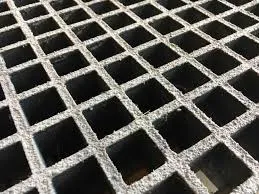
-
 Afrikaans
Afrikaans -
 Albanian
Albanian -
 Amharic
Amharic -
 Arabic
Arabic -
 Armenian
Armenian -
 Azerbaijani
Azerbaijani -
 Basque
Basque -
 Belarusian
Belarusian -
 Bengali
Bengali -
 Bosnian
Bosnian -
 Bulgarian
Bulgarian -
 Catalan
Catalan -
 Cebuano
Cebuano -
 China
China -
 China (Taiwan)
China (Taiwan) -
 Corsican
Corsican -
 Croatian
Croatian -
 Czech
Czech -
 Danish
Danish -
 Dutch
Dutch -
 English
English -
 Esperanto
Esperanto -
 Estonian
Estonian -
 Finnish
Finnish -
 French
French -
 Frisian
Frisian -
 Galician
Galician -
 Georgian
Georgian -
 German
German -
 Greek
Greek -
 Gujarati
Gujarati -
 Haitian Creole
Haitian Creole -
 hausa
hausa -
 hawaiian
hawaiian -
 Hebrew
Hebrew -
 Hindi
Hindi -
 Miao
Miao -
 Hungarian
Hungarian -
 Icelandic
Icelandic -
 igbo
igbo -
 Indonesian
Indonesian -
 irish
irish -
 Italian
Italian -
 Japanese
Japanese -
 Javanese
Javanese -
 Kannada
Kannada -
 kazakh
kazakh -
 Khmer
Khmer -
 Rwandese
Rwandese -
 Korean
Korean -
 Kurdish
Kurdish -
 Kyrgyz
Kyrgyz -
 Lao
Lao -
 Latin
Latin -
 Latvian
Latvian -
 Lithuanian
Lithuanian -
 Luxembourgish
Luxembourgish -
 Macedonian
Macedonian -
 Malgashi
Malgashi -
 Malay
Malay -
 Malayalam
Malayalam -
 Maltese
Maltese -
 Maori
Maori -
 Marathi
Marathi -
 Mongolian
Mongolian -
 Myanmar
Myanmar -
 Nepali
Nepali -
 Norwegian
Norwegian -
 Norwegian
Norwegian -
 Occitan
Occitan -
 Pashto
Pashto -
 Persian
Persian -
 Polish
Polish -
 Portuguese
Portuguese -
 Punjabi
Punjabi -
 Romanian
Romanian -
 Russian
Russian -
 Samoan
Samoan -
 Scottish Gaelic
Scottish Gaelic -
 Serbian
Serbian -
 Sesotho
Sesotho -
 Shona
Shona -
 Sindhi
Sindhi -
 Sinhala
Sinhala -
 Slovak
Slovak -
 Slovenian
Slovenian -
 Somali
Somali -
 Spanish
Spanish -
 Sundanese
Sundanese -
 Swahili
Swahili -
 Swedish
Swedish -
 Tagalog
Tagalog -
 Tajik
Tajik -
 Tamil
Tamil -
 Tatar
Tatar -
 Telugu
Telugu -
 Thai
Thai -
 Turkish
Turkish -
 Turkmen
Turkmen -
 Ukrainian
Ukrainian -
 Urdu
Urdu -
 Uighur
Uighur -
 Uzbek
Uzbek -
 Vietnamese
Vietnamese -
 Welsh
Welsh -
 Bantu
Bantu -
 Yiddish
Yiddish -
 Yoruba
Yoruba -
 Zulu
Zulu
High-Performance Fiberglass Clarifiers for Efficient Water Treatment
Understanding Fiberglass Clarifiers A Sustainable Solution for Water Treatment
In the evolving landscape of environmental management, water treatment remains a critical concern across the globe. With the growing demand for cleaner water resources, industries are turning to innovative solutions that not only improve water quality but also prioritize sustainability. One such solution gaining traction is the fiberglass clarifier.
Fiberglass clarifiers belong to a category of water treatment systems designed to separate solids from liquid waste, resulting in cleaner effluent for various applications. As industries like agriculture, manufacturing, and municipal wastewater management face the challenge of managing and treating water efficiently, fiberglass clarifiers offer a remarkable solution that combines durability, efficiency, and environmental friendliness.
The Advantages of Fiberglass Material
The material properties of fiberglass are central to the effectiveness of fiberglass clarifiers. Fiberglass, a composite made from glass fibers and resin, is known for its high strength-to-weight ratio, corrosion resistance, and durability. This resistance to corrosive substances makes fiberglass clarifiers particularly advantageous in environments where traditional materials like steel or concrete may succumb to chemical degradation over time.
Furthermore, fiberglass is lightweight compared to other construction materials, allowing for easier transport, installation, and maintenance of the clarifier systems. This aspect becomes especially critical in remote or difficult-to-access locations, where heavy equipment might pose logistical challenges.
How Do Fiberglass Clarifiers Work?
The functioning of a fiberglass clarifier revolves around the principles of sedimentation and separation. Wastewater enters the clarifier and passes through a series of stages where solids are allowed to settle at the bottom due to gravity. The clarified water then rises to the top and is siphoned off for further treatment or safe discharge.
fiberglass clarifier

The design of fiberglass clarifiers often includes features like extended surface area, or inclined plates, which enhance the settling process. This allows for greater efficiency in separating solids from liquids, resulting in a higher quality effluent and reducing the overall load on downstream treatment processes.
Applications Across Industries
Fiberglass clarifiers have found extensive applications across various sectors. In municipal wastewater treatment plants, they play a vital role in ensuring that sewage is properly treated before it is released back into the environment. In industrial settings, they can be used to treat process water, reclaiming valuable resources and minimizing the wastewater that needs to be managed.
Additionally, the use of fiberglass clarifiers can lead to cost savings. Their efficiency in separating solids reduces the need for extensive downstream treatment, which can lower operating costs and energy use while promoting a more sustainable resource management approach.
Sustainability Impact
By utilizing fiberglass clarifiers, industries can significantly reduce their environmental footprint. Improved solid-liquid separation means less sludge generation, more efficient overall water use, and a reduction in harmful effluents being released into waterways. Furthermore, many fiberglass clarifiers are designed with the ability to integrate with advanced technologies, such as automated monitoring systems, which help optimize the treatment process and minimize waste.
Conclusion
In summary, fiberglass clarifiers represent a significant advancement in the field of water treatment. By leveraging the unique properties of fiberglass, these systems provide an effective, sustainable solution for managing wastewater, benefiting both industries and the environment alike. As the need for clean water continues to rise, innovations like fiberglass clarifiers will play a crucial role in ensuring a sustainable future for our water resources.
Latest news
-
Exploring the Benefits of Top Hammer Drifter Rods for Enhanced Drilling PerformanceNewsJun.10,2025
-
High-Precision Fiberglass Winding Machine for GRP/FRP Pipe Production – Reliable & Efficient SolutionsNewsJun.10,2025
-
FRP Pipes & Fittings for Shipbuilding - Corrosion-Resistant & LightweightNewsJun.09,2025
-
Premium FRP Flooring Solutions Durable & Slip-ResistantNewsJun.09,2025
-
Premium Fiberglass Rectangular Tanks Durable & Lightweight SolutionNewsJun.09,2025
-
Tapered Drill String Design Guide Durable Performance & UsesNewsJun.09,2025









